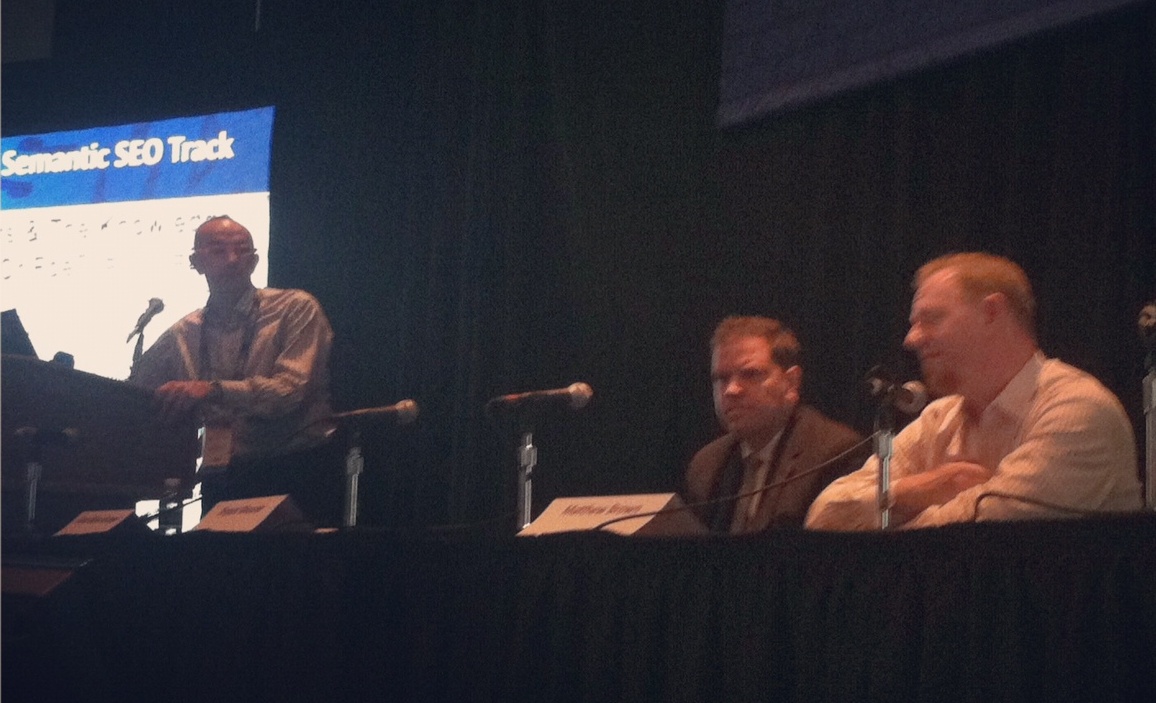Depending on the query, searchers may have noticed Google is giving more of its page one real estate to Knowledge Graph – first through its right side bar, more recently with a carousel that occupies the space directly below the query field. Is Knowledge Graph going to cannibalize sites’ traffic – not only because of its prime positioning, but because it offers “answers” to searches directly on SERPs?
At SMX East, SEO experts talked about the implications of Knowledge Graph for marketers’ content that lands on similar SERPs (friend or foe?), and offered tips for using a keyword and content marketing strategy that is Graph-proof.
To start, it’s important to recognize that Knowledge Graph can’t cover everything (at least not yet).
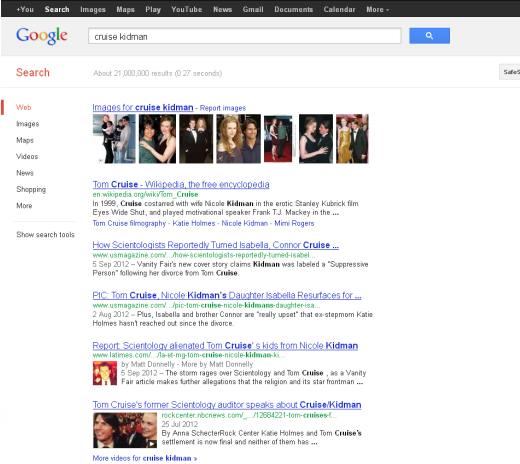
As Andy Atkins-Kreuger from Webcertain pointed out, the Graph is limited in its ability to build the connections between queries the way human writers and content creators (and human searchers) can. It seems the graph can’t (or won’t?) produce results for searches that cover multiple entities. For example, searching for “Cruise Kidman” or “Tom Cruise Nicole Kidman” fails to produce a Knowledge Graph answer for either of the stars. (Google only produced Knowledge Graph answers for Tom Cruise, as even “cruise” was too ambiguous.)
While Google’s acquisition of Freebase via Metaweb years ago may ultimately result in more nuanced results for queries that don’t have an exact answer or different treatment of searches that entail multiple entities, the panelists agree that there are still a lot of queries Knowledge Graph doesn’t touch – so marketers have the edge.
There are (limited) opportunities to be showcased in Knowledge Graph … if that’s what brands want …
Matthew Brown of AudienceWise pointed out that Google’s Knowledge Graph pulls primarily from Google itself (ie: Google Places) and from Wikipedia. In fact, he said most of its information comes from Wikipedia. Yet, Bryson Muenier of Resolution Media said that Wikipedia has not lost substantial traffic from Google since the launch of Knowledge Graph (according to his research).
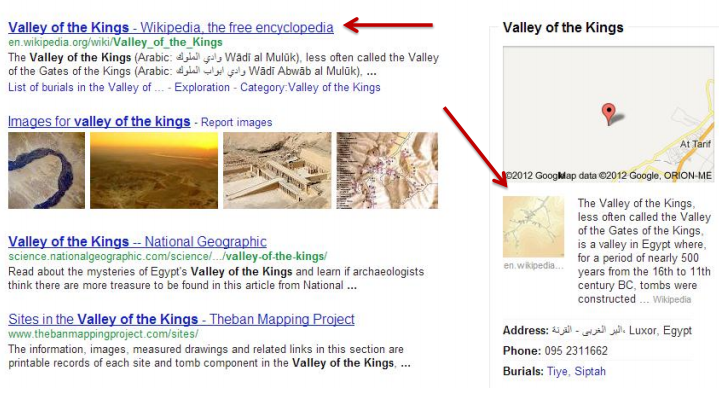
“It’s not Schema.org data we’re seeing most in the Knowledge Graph results, it’s Open Graph.”
According to Brown, the Graph may ultimately incorporate more sources. He has observed more image results from multiple sources, and advised marketers to carefully optimize their images if they want to be included as visual elements in certain Graph results. When doing markup for Knowledge Graph, he emphasized, “It’s not Schema.org data we’re seeing most in the Knowledge Graph results, it’s Open Graph.” While all the panelists advised marketers interested in being featured in Knowledge Graph to use Schema mark ups, Brown emphasized using Open Graph as well.
Of course, this begged the question, what’s the benefit of being featured in Knowledge Graph unless the click goes to the sponsoring site? The images in the carousel for example, only yield search results for image-specific. Below is an example of what happens after clicking the image for “The Others” in the carousel result for a “Nicole Kidman” search.
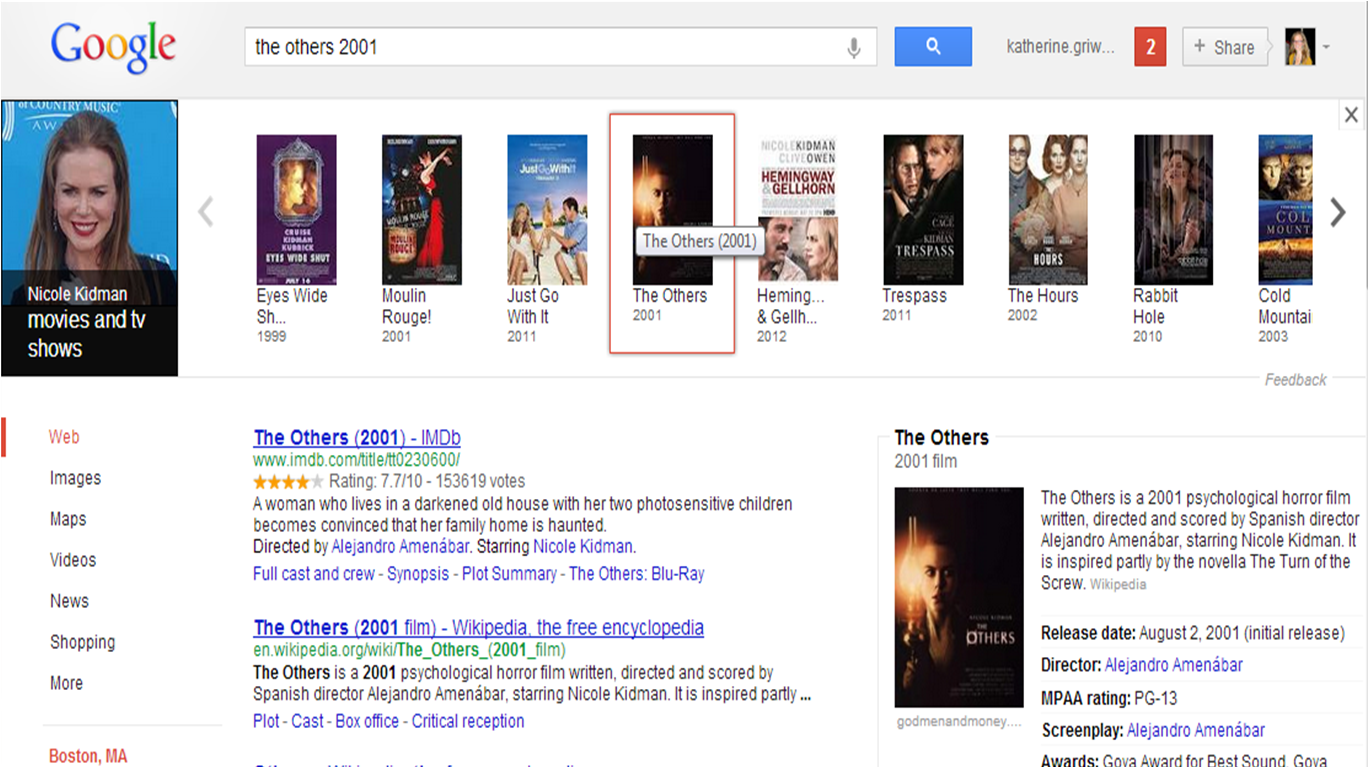
But before getting angry about Knowledge Graph stealing clicks, the panelists asked marketers to consider, “how many clicks were you really getting on terms that are now present in Knowledge Graph?”
Smart keyword research and monitoring can safeguard site clicks.
It’s important to recognize the types of queries most closely connected to Knowledge Graph terms. Longtail queries are not likely to be covered by Knowledge Graph, and these more nuanced queries frequently drive conversions. However, depending on your industry, head terms and mid-tail terms could be impacted.
Searches for certain entities, such as “cloud computing” or “pay day loans,” yield SERPs unaffacted by Knowledge Graph (even though Wikipedia entries are readily available – and act as the No.1 results – for these terms). Many of the impacted SERPs seem to be related to entertainment queries or verticals, such as movies, athletics, celebrities and travel/places.
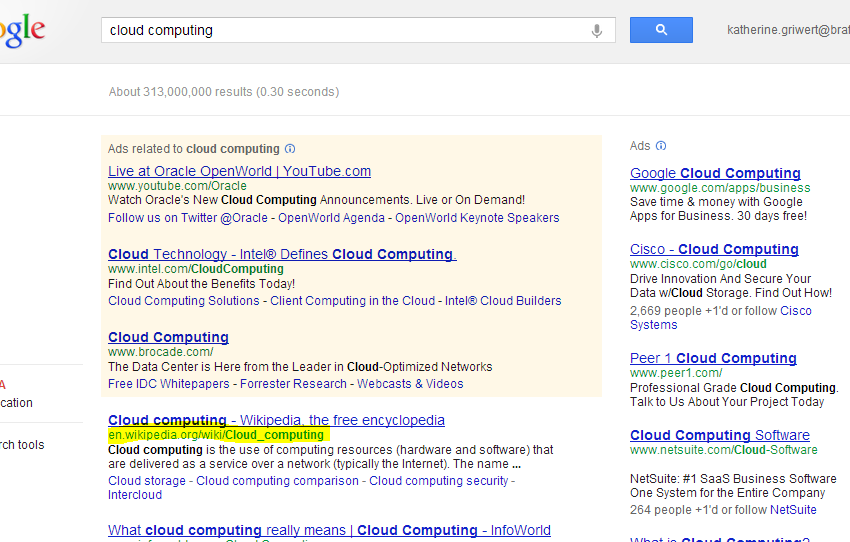
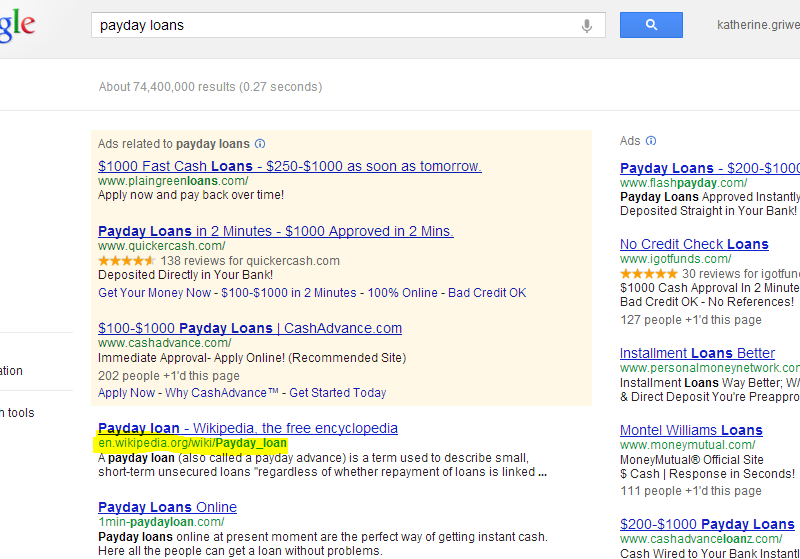
If marketers think their traffic has been (or could be) impacted by Knowledge Graph, there are certain checks they should consider:
- Track keyword or entity SERPs to see if Knowledge Graph is eating them.
- Compare expected search volume (or historic search traffic) with actual traffic for terms.
- In cases where volume is seasonal (and Knowlege Graph seems to produce results) compare annual traffic percentages to look for big drops.
- Navigate away from Knowledge Graph as needed.
At the end of the session, most marketers still claimed Knowledge Graph was not their sites’ friend, but there were few who called the Graph a foe. In a Q&A with Matt Cutts at SES San Francisco, Danny Sullivan pointed out the rise of Google answers on SERPS may be bad for brands that are in the business of giving answers. (Although Knowledge Graph came up in that discussion, he was speaking more to Answers on SERPs – such as flight info cannibalizing clicks from travel sites.)
Google’s Matt Cutts acknowledged that it’s in Google’s best interest to look out for websites that want clicks, even as it tries to build positive users experiences on SERPs. He said:
Google’s focus is on the best user experience, but we are mindful of webmasters. Users HAVE to come first or searchers will go elswhere, but we understand the web IS websites, and it needs to be good for webmasters. Otherwise people would move to apps and search wouldn’t work out.
